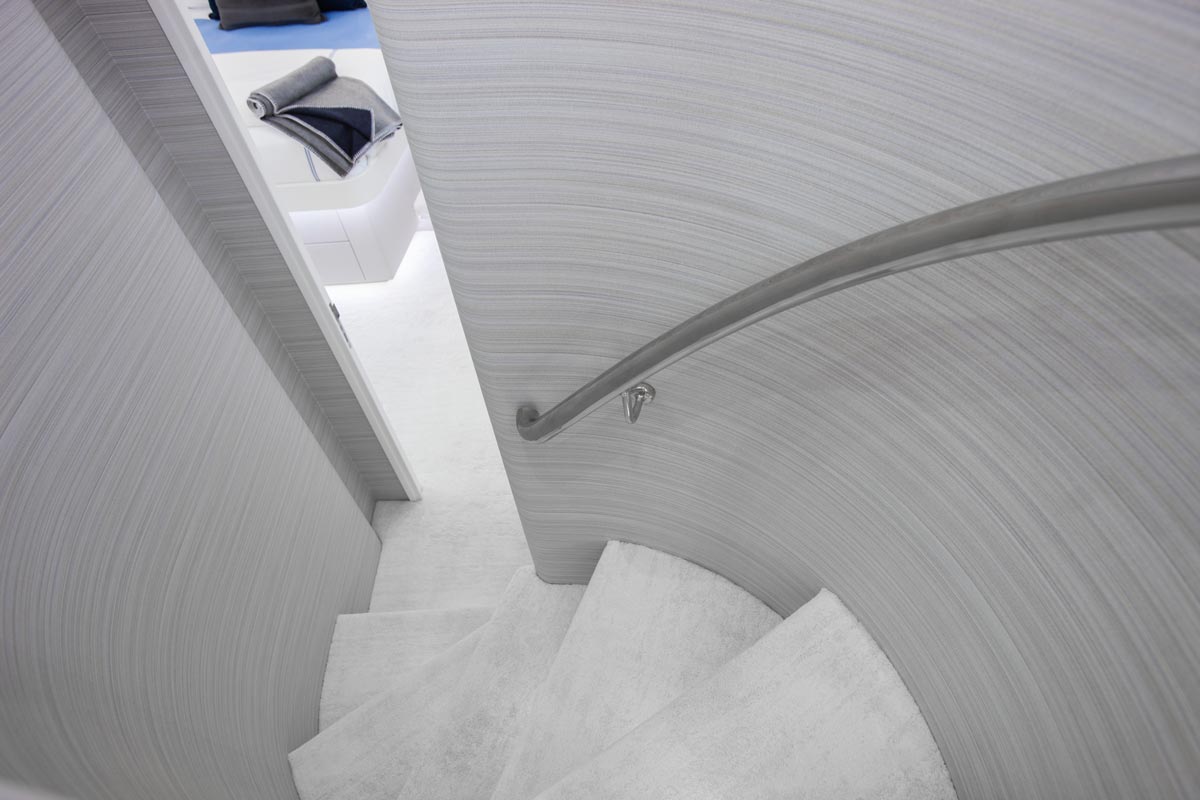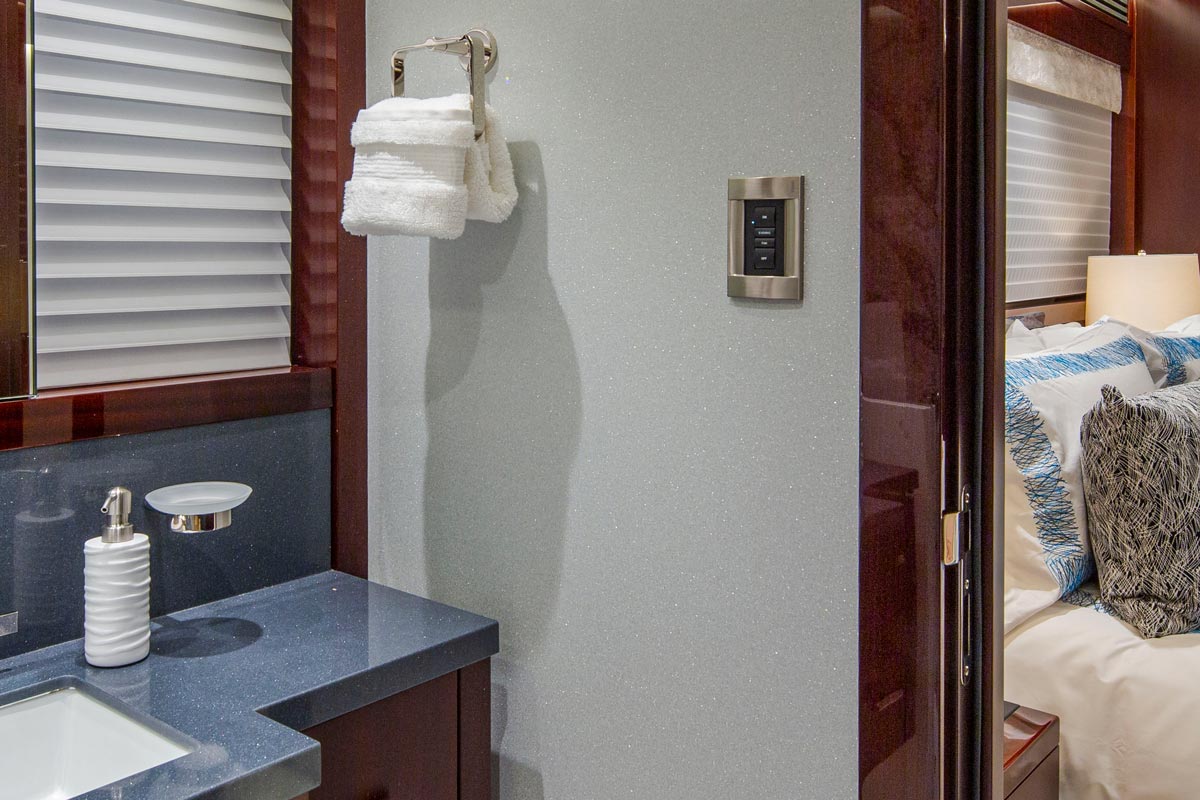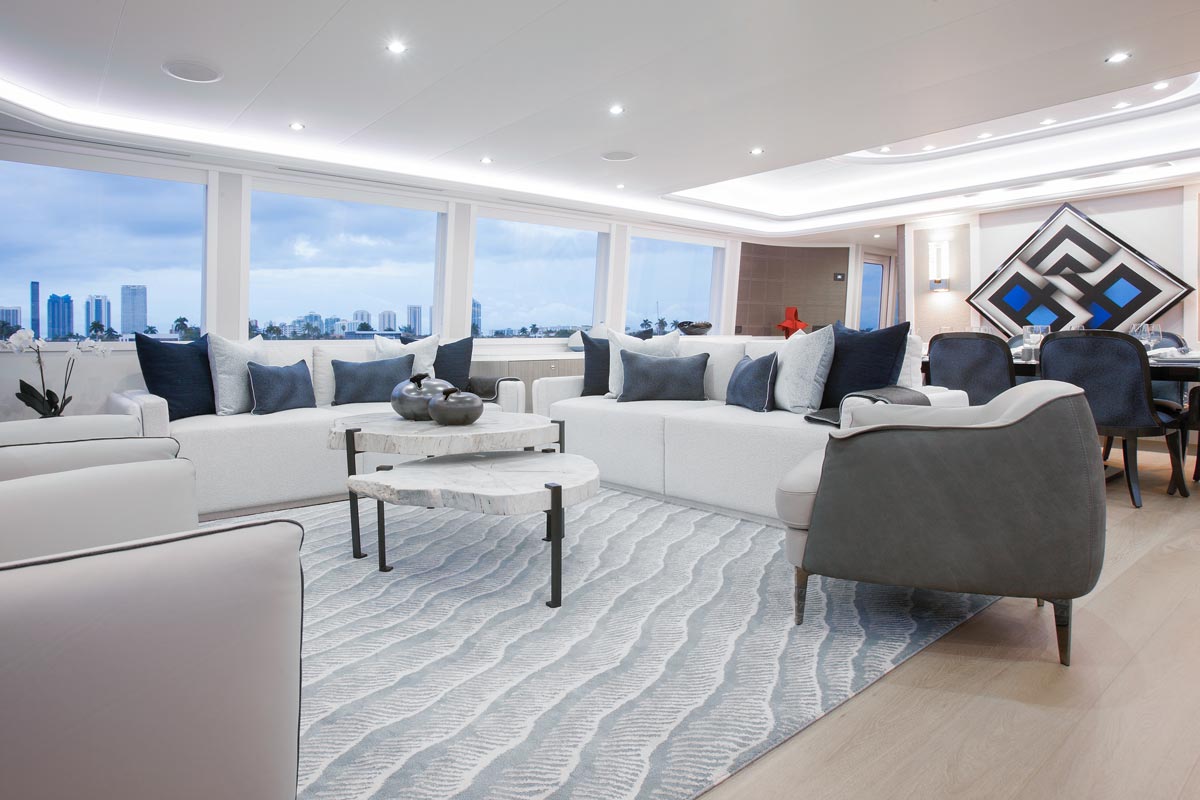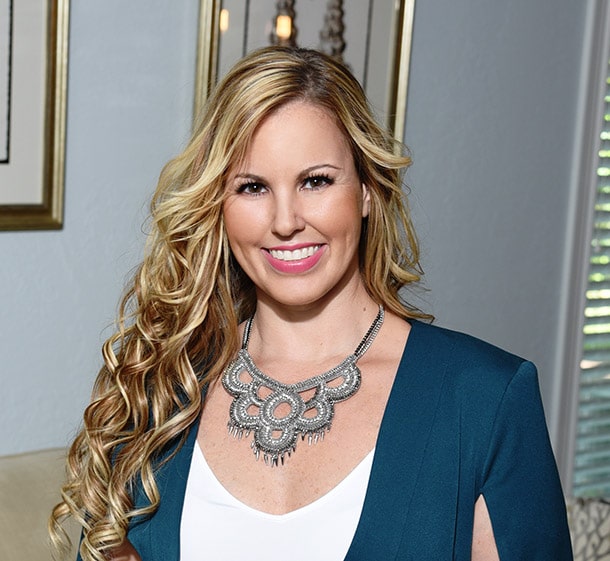Tile and wallcoverings are inherent elements of a yacht’s decor and the range of options is seemingly endless. In the past, implementing luxurious natural stones such as marbles and onyx were installed after undergoing a painstaking – and expensive – process called “honeycombing,” which essentially affixed a thin sliver of the stone to a lightweight aluminum or polymer core to ensure both the durability and integrity of the stone while keeping the weight to a minimum. Using stone on walls was a tedious undertaking at best. Wallcoverings consisted of teak, mahogany or wood paneling or veneers stained in a rather limited palette of tones. The advancements in synthetic lightweight and durable stone such as Cambria quartz coupled with the rising popularity of tiles and myriad selections of textured wallcoverings of all styles puts the world of style and texture at the client’s fingertips – at a fraction of the price.
1. Use the Right Materials
Let’s begin with basic installation. In contrast to a home, a yacht is a completely different animal. Tiles, wallcoverings (and flooring… everything!) must factor in the constant movement and exposure to salt air, humidity and ultraviolet light at the very least, not to mention the need for sound dampening in small spaces. Marine-grade materials are essential, as are flexible and sound dampening sub-surfaces. When affixing the materials to the walls, moisture-resistant adhesives and special grout materials must be used.
2. Keep it durable
Walls and surfaces on yachts see frequent use and contact, so make sure that any high-traffic area that may come into contact with humans and other items on a regular basis – such as stairwells and heads – are lined with durable materials. Vinyls, for example, can not only be very gorgeous but they are also more heavy duty and durable. Vinyl wall coverings work well in areas such as heads where there is a lot of moisture as they can easily be cleaned.
Aboard the 112’ Westport motor yacht Hannah, I used a vinyl wallcovering for the stairwell leading into the VIP guest stateroom.

112′ Westport Hannah VIP Stairwell | View Portfolio
I try to be careful about what I use in stairwells – especially onboard boats because these areas are usually curved – the wall covering can get scratched and scuffed with bags and people going up and down. I use a lot of Phillip Jefferies products because they have such lovely textural woven papers. Not only do they carry fabric and textile wallpapers, they also have a line of vinyls that match their fabrics. Some vinyls can look just like silks or have heavy texture on them. They are just beautiful and priced really well.
Aboard the 125′ Westport Castlefinn (now named Q), we used a vinyl wallcovering from Innovations in the heads that looks like little sparkly glass beads but it actually a durable vinyl.

Wallcovering Installation Onboard the 112′ Westport Castlefinn (now Q) | View Portfolio
3. Combine Textures & Finishes
With the neverending spectrum of options now available when it comes to tiles and wallcoverings, take time to focus on texture and finishes and don’t be afraid to use a mixture! Combining different – even opposing – finishes and textures creates interest, character, depth, dimension and balance. We’ve been doing this a lot lately in our projects.
Throughout the 112′ Westport Hannah we paired sleek high gloss, metallic and pearlescent painted surfaces, glossy tile and polished quartz stone surfaces with the more rustic, wire-brushed oak and heavily textured fabric materials and wall coverings that all contrasted pleasantly for a casual yet refined ambience.

112′ Westport Hannah Main Salon | View Portfolio
From the gloss paints to the textural wall coverings to the flooring with open grain – every finish on that boat is a combination of contrasting finishes.

112′ Westport Hannah Master Stateroom | View Portfolio
Some wall coverings can look like tile – such as this woven wallcovering from Phillip Jefferies we used in the 112’ Westport Wild Kingdom.

Wallcovering Installation 112′ Westport Wild Kingdom
4. Make a Statement
A statement wall provides a powerful narrative and personality and acts as an anchor on which you can layer art or other details to tell a story. It can define a space and influences an adjoining space.

Statement Wall 125′ Westport Castlefinn (now Q) | View Portfolio
Some statement projects can be exceptionally detailed, such as the custom stairwell aboard the 142’ Christensen Lady Bee that is made of mother-of-pearl with brass inlays and Swarovski crystals. This was a multi-step project that required the creation of an on-site template, from which we prepared drawings to share with the manufacturer in India who made each piece individually. When the tiles arrived we had to build the wall piece by piece – it wasn’t easy but we did it!

Statement Stairwell 142′ Christensen Lady Bee | View Portfolio
5. Hire a Yacht designer
When selecting and installing tile and wallcoverings, however, the best advice is to make sure the professional you’re working with is experienced in yacht design (Read more on this topic in the blog post “Hiring a Yacht designer: The Benefits”).
Keen for a salon with velvet walls? The desired effect can be achieved with a few tweaks – hint, no velvet! A professional yacht designer will steer you in the right direction of tiles and wallcoverings that not only suit your style but will stand up to the elements that abound in a yacht environment.
As with any style, trends in tile and wallcoverings are cyclical. Years ago we used a lot of wallpapers and patterns, then the preference was wood and veneers. Then all of the sudden it was fabrics and less wood and now it’s wallpapers again and tiles. There are so many cool options out there – you can keep the space very neutral as an anchor and layer it with textures and pops of color. Wallcoverings and tiles are fun and can act as their own pieces of art.

